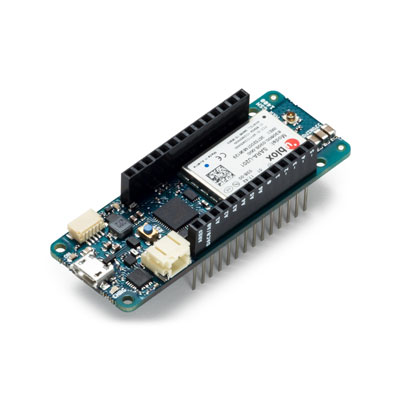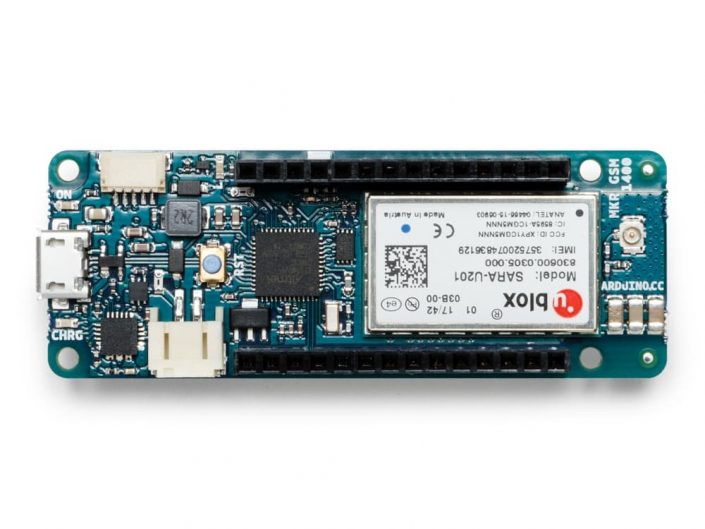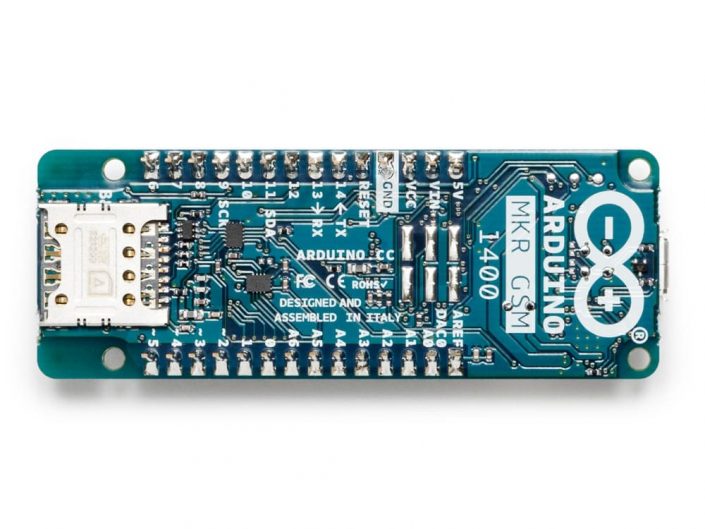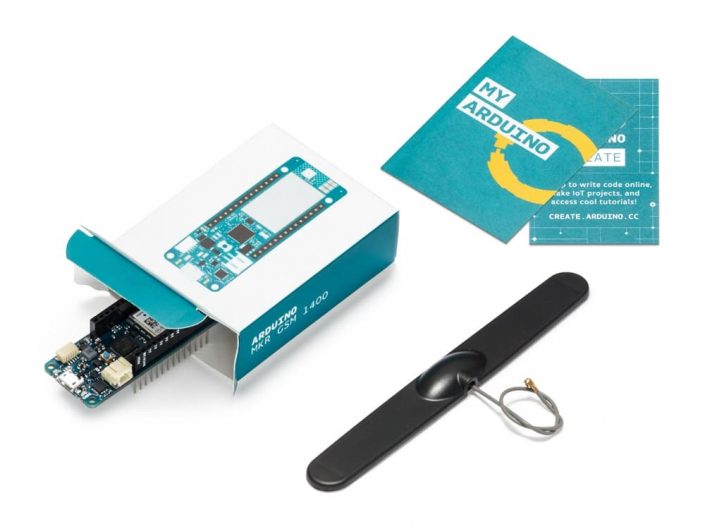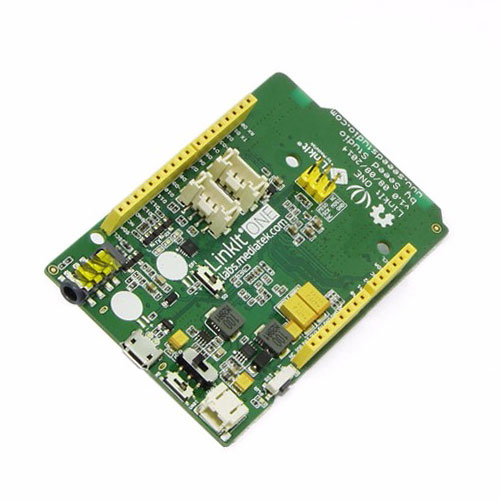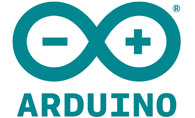Official ARDUINO MKR GSM 1400
- үнэ: 320,000 төг
Code: ABX00018
Arduino MKR GSM 1400 is a powerful board that combines the functionality of the Zero and global GSM connectivity. It is the ideal solution for makers wanting to design IoT projects with minimal previous experience in networking.
Please note: This board does not ship with a SIM card and Antenna
Arduino MKR GSM 1400 has been designed to offer a practical and cost effective solution for makers seeking to add global GSM connectivity to their projects with minimal previous experience in networking. It is based on the Atmel SAMD21 and a SARAU201 GSM module.
The design includes the ability to power the board using a LiPo battery or external power source from 5V up to 12V. Switching from one source to the other is done automatically. A good 32 bit computational power similar to the Zero board, the usual rich set of I/O interfaces, global GSM communication and the ease of use of the Arduino Software (IDE) for code development and programming. All these features make this board the preferred choice for the emerging IoT battery-powered projects in a compact form factor. The USB port can be used to supply power (5V) to the board. During cellular transmissions the peak current required by the board will exceed 500mA. This is in excess of what can sourced by a standard USB port, so it is MANDATORY to have a 1500 mAh or higher LiPo battery plugged all the time, the current provided by the USB port will be supplemented by the battery. When powering the board using Vin, a 5V power supply that can supply at least 2A is required.
Warning: Unlike most Arduino & Genuino boards, the MKR GSM 1400 runs at 3.3V. The maximum voltage that the I/O pins can tolerate is 3.3V. Applying voltages higher than 3.3V to any I/O pin could damage the board. While output to 5V digital devices is possible, bidirectional communication with 5V devices needs proper level shifting.
Getting Started
You can find in the Getting Started section all the information you need to configure your board, use the Arduino Software (IDE), and start tinker with coding and electronics.
Need Help?
- – On the Software on the Arduino Forum
- – On Projects on the Arduino Forum
- – On the Product itself through our Customer Support

The Arduino MKR GSM 1400 is based on the SAMD21 microcontroller.
| Microcontroller | SAMD21 Cortex®-M0+ 32bit low power ARM MCU (datasheet) |
| Radio module | u-blox SARA-U201 (datasheet) |
| Secure Element | ATECC508 (datasheet) |
| Board Power Supply (USB/VIN) | 5V |
| Supported Battery | Li-Po Single Cell, 3.7V, 1500mAh Minimum |
| Circuit Operating Voltage | 3.3V |
| Digital I/O Pins | 8 |
| PWM Pins | 13 (0 .. 8, 10, 12, 18 / A3, 19 / A4) |
| UART | 1 |
| SPI | 1 |
| I2C | 1 |
| Analog Input Pins | 7 (ADC 8/10/12 bit) |
| Analog Output Pins | 1 (DAC 10 bit) |
| External Interrupts | 8 (0, 1, 4, 5, 6, 7, 8, 16 / A1, 17 / A2) |
| DC Current per I/O Pin | 7 mA |
| Flash Memory | 256 KB (internal) |
| SRAM | 32 KB |
| EEPROM | no |
| Clock Speed | 32.768 kHz (RTC), 48 MHz |
| LED_BUILTIN | 6 |
| Full-Speed USB Device and embedded Host | |
| Antenna gain | 2dB (bundled antenna at the Arduino Store) |
| Carrier frequency | GSM 850 MHz, E-GSM 1900 MHz, DCS 1800 MHz, PCS 1900 MHz |
| Working region | Global |
| SIM Card | MicroSIM (not included with the board) |
| Length | 67.64 mm |
| Width | 25 mm |
| Weight | 32 gr. |
Pinout Diagram
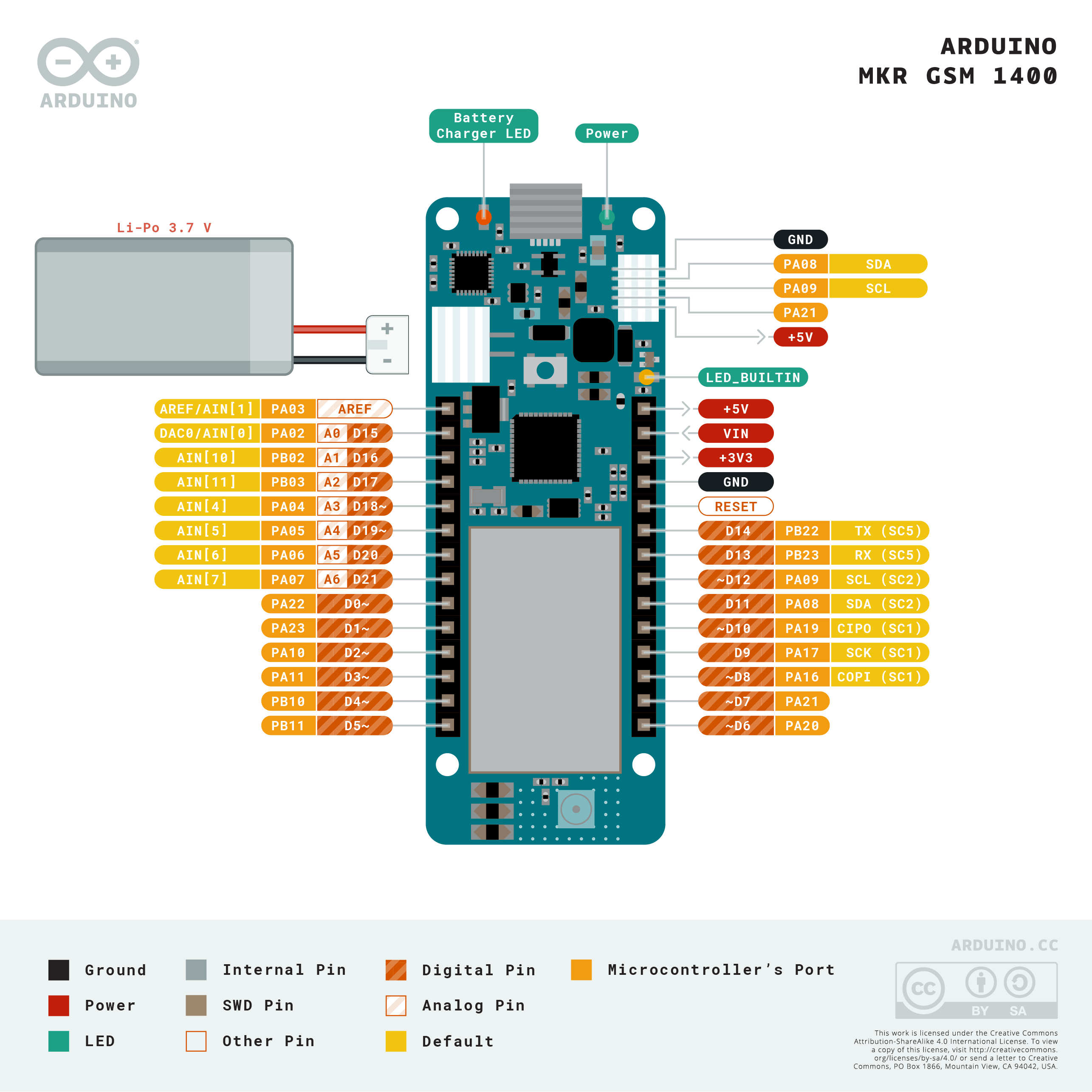
Download the full pinout diagram as PDF here.
Additional I2C Port
The MKR GSM 1400 has an additional connector meant as an extension of the I2C bus. It’s a small form factor 5-pin connector with 1.0 mm pitch. The mechanical details of the connector can be found in the connector’s datasheet.
The I2C port, also referred to as the Eslov self-identification port within Arduino, comes with: SDA, SCL, GND, +5V, and an extra digital pin meant to send an alarm to the otherwise plain I2C devices connected to it. The pinout is shown in the following image:

Санал болгох бараа
Үйлдвэрлэгч
Угсармал хавтан
- ЭХ ХАВТАН
- МЭДРЭГЧ модуль
- ХОЛБОЛТЫН модуль
- ИНТЕРФЕЙС хөврүүлэгч модуль
- МОТОР ДРАЙВЕР модуль
- ТЭЖЭЭЛИЙН модуль
- РЕЛЕ модуль
- Өргөтгөл модуль
- ТОВЧЛУУР модуль
- ӨСГӨГЧ, ДУУНЫ модуль
- ДЭЛГЭЦ, ЛЕД модуль
- Вольтметр, Амперметр
- RTC модуль
- AD/ DA модуль
- КАМЕР
- Програмчлагч хавтан
- EEPROM, I2C модуль
- Proto shield
- ИЖ БҮРДЭЛ
- Дагалдах хэрэгсэл
Зэс, универсал, сургалтын хавтан
- Зэс хавтан
- Универсал хавтан
- Сургалтын хавтан
Гэр ахуйн барааны хавтан
Лавлах утас: 77107805, 99198321
Хаяг : Улаанбаатар хот, Чингэлтэй дүүрэг, Компьютер ланд, 3-н давхар, 12 тоот
“ЧИП ЭЛЕКТРОНИКС” ХХК
© Copyright – 2025 www.chip.mn

